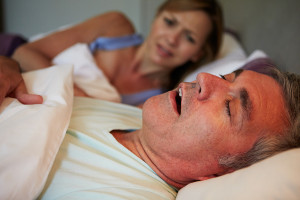Introduction
Snoring is the annoying sound that a person makes when they have various degrees of airway obstruction during sleep.
It can be a mild rattling, which only occurs in some nights with a certain position of the neck or there can be a full blown sleep apnea with daytime drowsiness from a lack of restful sleep.The snoring sound can come from any structure in the nose that can vibrate in the air stream such as polyps, the uvula in the soft palate, overly relaxed muscles of the pharyngeal wall or in the voice box.
Diagnostic tests
It takes a referral to an ENT specialist who will do an endoscopy of the nose to assess what the airways are like. In order to complete the study, the specialist likely will order investigations in a sleep lab, where the blood gases are measured along with brain waves and sleep observations are done by using time lapse video cameras.
Treatment
This way the physician can rule out whether sleep apnea is present and whether or not CPAP, a positive pressure assisted breathing apparatus, is required. Tonsils, polyps, adenoids or large uvulas may have to be removed surgically. Much can be achieved these days to control snoring, but the patient or the spouse or family have to get the cooperation of the patient to seek medical advice. Often people downplay that there is a problem. When all is done the patient wishes that he had taken action earlier.
Insomnia treatment
Melatonin at 0.5 mg to 3 mg at bedtime can help tremendously to restore sleep rhythm disturbance patterns (Ref. 8). In this reference Dr. Hertoghe describes also that often patients with snoring and sleep apnea are thyroid deficient and thyroid hormone replacement will help the airway obstruction. DHEA is also described in Ref. 8 as being very useful for improvement of snoring and sleep apnea.
References:
1. James Chin et al., Editors: Control of Communicable Diseases Manual, 17th edition, 2000, American Public Health Association.
2. Behrman: Nelson Textbook of Pediatrics, 16th ed., 2000, W. B. Saunders Company
3. J M Hickner et al. Ann Emerg Med 37(6): 703-710. June 2001.
4. Noble: Textbook of Primary Care Medicine, 3rd ed.,2001 Mosby, Inc.
5. Abeloff: Clinical Oncology, 2nd ed.,2000,Churchill Livingstone, Inc.
6. Ferri: Ferri’s Clinical Advisor: Instant Diagnosis and Treatment, 2004 ed., Copyright © 2004 Mosby, Inc.
7. Rakel: Conn’s Current Therapy 2004, 56th ed., Copyright © 2004 Elsevier
8. Thierry Hertoghe, M.D.: “The Hormone Solution – Stay Younger Longer With Natural Hormone And Nutrition Therapies.” Three Rivers Press, New York, copyright 2002: page 193 and 194.







